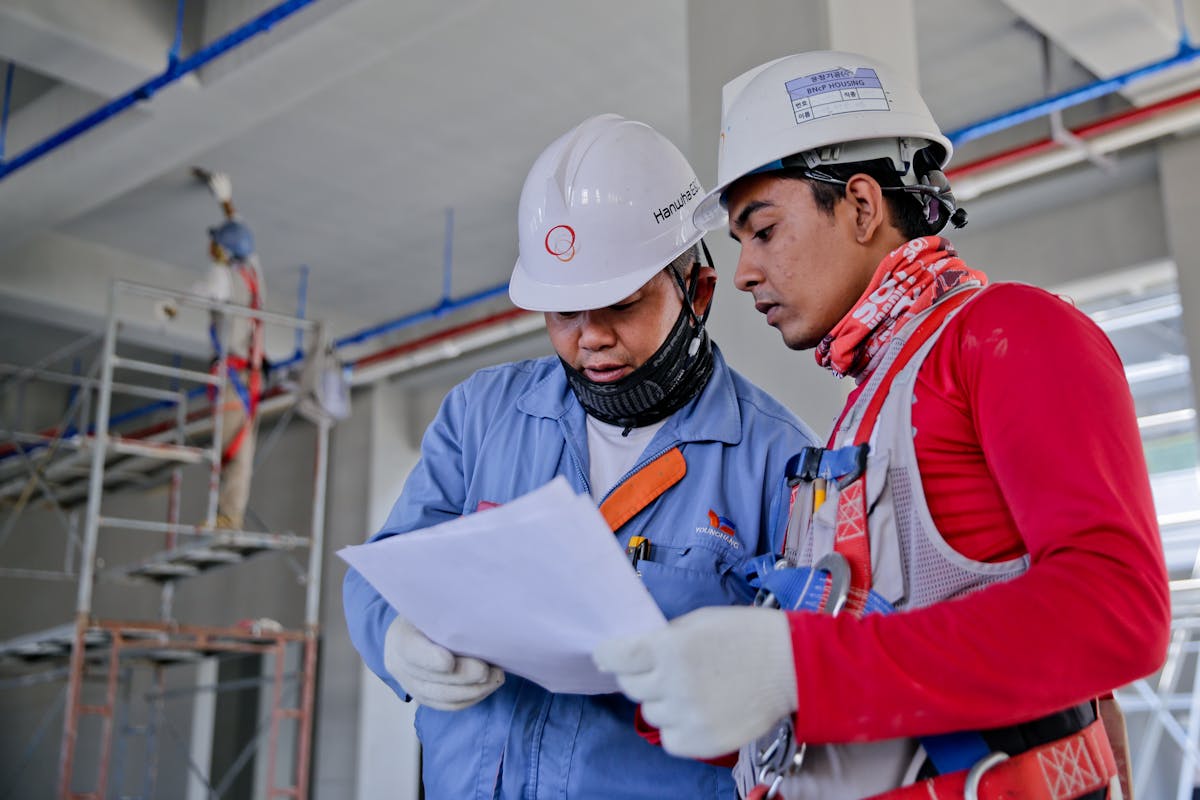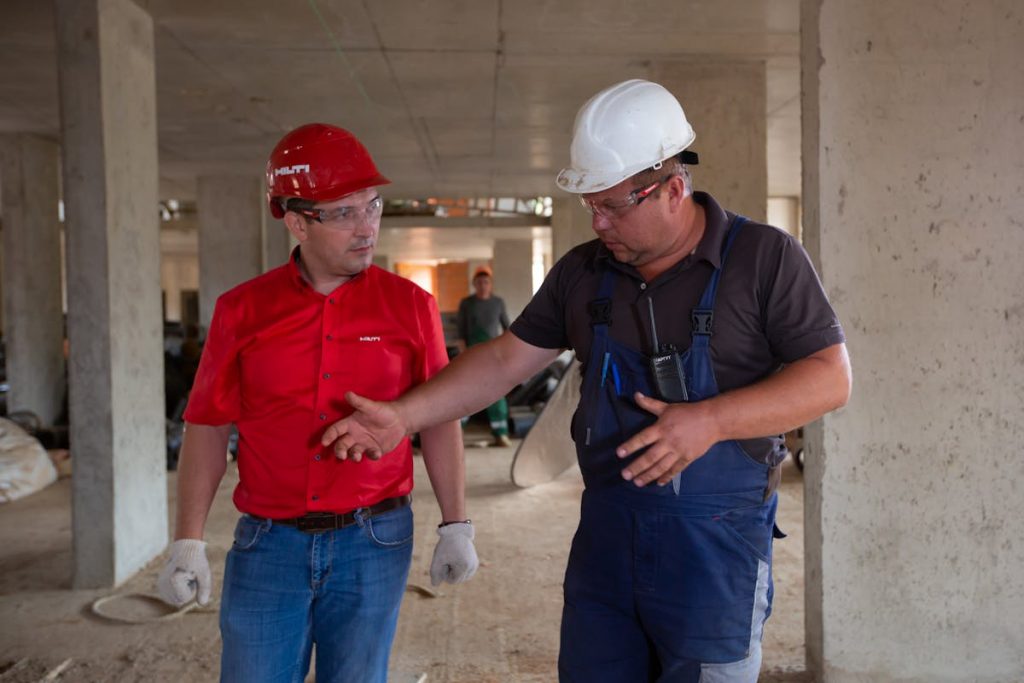- The Internet of Things (IoT) transforms project management by integrating advanced technologies like AI and AR into construction planning and execution.
- AI-driven systems and AR platforms are crucial in predicting project delays and enhancing on-site work efficiency through real-time overlays.
- IoT sensors offer ongoing structural health monitoring, extending their utility beyond construction completion to ensure long-term sustainability and safety.
- A culture emphasizing adaptability and continuous learning is essential; construction firms must evolve with technology to avoid becoming obsolete.
The construction industry’s landscape has always been defined by its structures—the tangible monuments that stand as a testament to human ingenuity. However, as durable as these structures appear, their physical and organizational foundations have been subject to continuous evolution, particularly in project management. From rudimentary tools and labor-intensive methods to the digitized, data-driven systems in place today, the construction industry has revolutionized how it manages the intricate dance of materials, labor, and deadlines. This article unfolds the story of that evolution and the pivotal role that project management tools have played.

The Early Years of Project Management in Construction
Before any beam was lifted or any plan set to action, project management in the construction industry was inherently a feat of manual labor and meticulous coordination. Architects’ blueprints that once were meticulously hand-drawn on paper represented the standing operating procedures of the time. While respected for its precision, the process was fraught with human errors and capable of only so much detail.
Traditional Methods and Tools
Construction managers had no choice but to rely on a suite of manual tools—T-squares, protractors, and leveling instruments—as stoic as the structures they aimed to create. These instruments, handed down through generations, marked the territory of predictability and measured innovation one empirical inch at a time.
The paperwork was the project. Meeting notes, schedules, and cost estimations were akin to the mortar, each document vital to a project’s success. But as necessary as these tools were, their inefficiency and lack of mobility meant they also became bottlenecks, constraining the flow of progress.
Limitations and Challenges of Early Project Management Practices
There’s a parallel between the tools of the trade and the projects themselves. Both were subject to the constraints of their weight—the weight of the materials and the weight of the administrative processes. These constraints often led to challenges in timeline management and budget forecasting—challenges that, through no fault of the project manager, were the inevitable byproducts of a less agile era.
The Onset of Digital Project Management Tools
With the emergence of the digital era came multifaceted advancements that would change the construction landscape and uplift it to new heights—literally and figuratively. The introduction of digital project management tools revolutionized the way construction projects were conceived, planned, and executed.

Introduction to the First Digital Tools and Software in Construction
Early iterations of project management software were met with skepticism. Could a computer program with its binary precision truly capture the nuanced complexity of a construction project? Like all new tools, the transition was met with resistance. However, these nascent systems offered something no T-square or handwritten log could—scalability. With a few strokes of a keyboard, project managers could adjust timelines, rework cost analyses, and simulate structural changes that would have taken weeks using traditional methods.
Comparison with Traditional Methods
The shift from paper to digital was more than just a change in the medium; it was a revelation of possibility. Tasks that once seemed impossible became simply assets requiring management. The digital tools didn’t displace traditional wisdom; they complemented it. And while the transition was initially daunting, the benefits soon became evident.
Benefits Observed with the Transition to Digital Tools
Efficiency skyrocketed. What was once a process of cross-referencing sheets and manually inputting data became an automated dance of information, easily shared and redundantly backed up. Digital tools managed to do the unthinkable—they made project management predictable within the otherwise capricious industry. The bugbears of human error and paper inefficiency were suddenly relics of the past, and the projects began to run on time and, more importantly, on cost more frequently.
The Modern Era of Construction Project Management
Today’s construction project management landscape is virtually unrecognizable from the early days. Once we plotted points on a map, we now encapsulate entire projects’ lifecycles within a single interface. The modern era of project management in construction is about more than just managing; it’s about mastering data and harnessing technologies that, just decades ago, seemed the stuff of science fiction.
Advanced Software Solutions
The range of software for project management in construction is as vast as the industry itself. From Agile methodologies to simulations that predict project outcomes, today’s construction managers have an arsenal that blurs the lines between management and foresight. Solutions like Building Information Modeling (BIM) are as integral to the project’s lifeblood as concrete and steel.
Integration Capabilities and Real-time Data Management
Perhaps the most potent aspect of modern software solutions lies in their integration capabilities. Brute and raw data now flows through these systems with ramifications that stretch from budget crunching to wind load simulations. Construction projects are veritable data goldmines, and today’s software manages this resource in real time, providing oversight that was wholly inconceivable to the industry’s elders.
Enhancing Efficiency and Productivity
Where high efficiency and productivity were once aspirational, they are benchmarks consistently met and often exceeded. The marriage of software and construction management has streamlined processes to such an extent that the industry is in a perpetual state of revolution.
We can’t discuss the modern construction landscape without highlighting remarkable, specialized tools like the Biddi app for contractor profitability and estimation. This groundbreaking app has effectively changed bid estimations and budget forecasting, offering unprecedented accuracy and insight into projects’ profitability.
The app dives deep into project data, offering detailed cost estimates with a precision that is impossible to achieve manually. The time and effort saved in the estimation process are immediately evident, but the true beauty lies in the enhanced profitability it bestows upon the projects it touches. The app is a quintessential example of how a tool can transform a process by reducing overages and identifying cost-saving opportunities.
The Future of Project Management in Construction
The future of project management in the construction industry is an exciting frontier ripe for innovation and integration of cutting-edge technologies. Predictions point to a world where Artificial Intelligence (AI), Augmented Reality (AR), and the Internet of Things (IoT) redefine the very nature of project management.
Emerging Technologies
Imagine an AI-driven system that forecasts project delays before they even occur. These AR-powered platforms allow site engineers to overlay plans with the live construction environment or IoT sensors that provide continuous health reports of a structure well beyond completion. The potential of these technologies lies not in their novelty but in their inherent capability to contextualize a construction project within the broader scope of the world it will inhabit.
The Importance of Adaptability and Continued Learning
While the tools may change, the need for adaptability remains a constant. Construction firms that cleave to conventional methods out of familiarity risk becoming obsolete. Cultivating a culture of adaptability that actively embraces new technologies and instills a hunger for continued learning is the most effective tool any construction project can have.
Conclusion
The evolution of project management tools in the construction industry is a story of progress that reflects the industry’s inherent spirit to build, innovate, and adapt. Far from being mere accessories, these tools have become the vanguards of a new era in construction, one marked by precision, predictability, and profit. The message is clear: for construction firms to thrive, they must construct for the present and manage with an eye toward the future.

